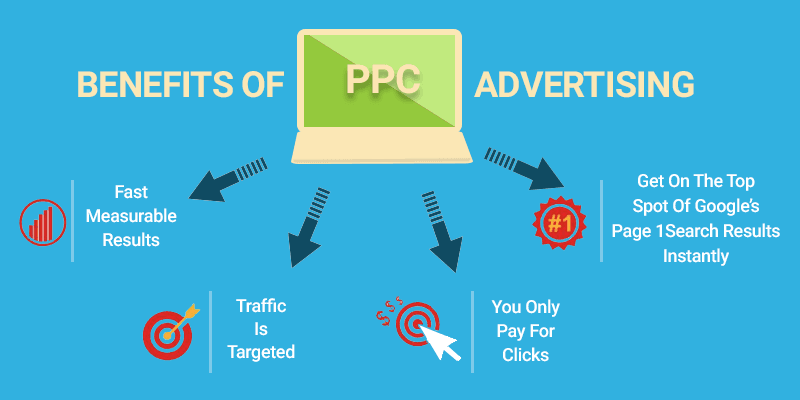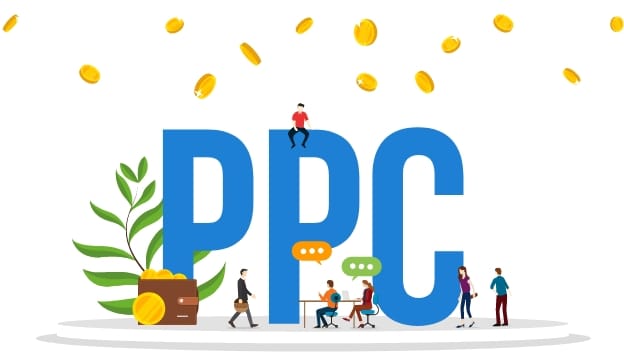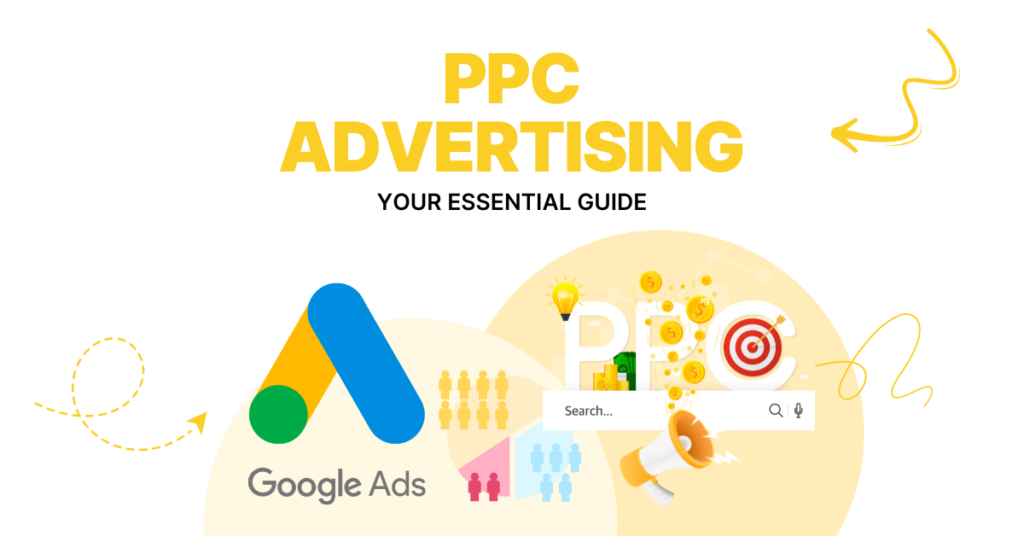What is PPC?
Table of Contents
What is PPC? Understanding Pay-Per-Click Marketing in Digital Advertising
Pay-Per-Click (PPC) marketing is a digital advertising model wherein advertisers incur a cost each time their ad is clicked. This method enables businesses to drive targeted traffic to their websites, enhancing visibility and potential conversions. By utilizing various platforms, such as search engines and social media, advertisers can strategically place their ads to reach specific audiences.

The effectiveness of PPC campaigns is often measured through metrics such as click-through rates and return on investment. Advertisers can optimize their strategies by analyzing these metrics, thereby improving their overall campaign performance.
Search Engine Optimization (SEO) Marketing
Client:
ANJ Plumbing - Anjservices.com
Category:
Digital Marketing
Start Date:
10 March, 2021
End Date:
Still Growing
Keywords Growth
+475% Top 10 Keyword Rankings
Leads growth
+266% Monthly Lead Growth
Conversion
+346% Conversion increase
Live Chat
+120% Live Chat Request increase
What is PPC and How Does it Work?
PPC or pay-per-click is a form of online marketing that enables businesses to drive traffic to their websites through paid advertisements. When users click on your ads, advertisers incur charges based on the clicks received.To maximize effectiveness, Digital Marketing Agency often target specific audiences with Instagram ads and other platforms while managing costly PPC keywords to optimize their return on investment. Understanding how PPC is working is crucial for success in digital advertising.Many platforms offer PPC advertising options, allowing advertisers to tailor their campaigns for better visibility and engagement. This strategic approach can significantly enhance brand presence online.Definition of Pay-Per-Click Advertising
Pay-Per-Click Advertising is a digital marketing model wherein advertisers incur costs only when a user clicks on their advertisement. This approach effectively maximizes advertising budgets by ensuring that expenditures are directly correlated with user engagement. Utilizing platforms such as search engines and social media, PPC enables targeted outreach to specific demographics, thereby enhancing the overall efficiency of marketing efforts.Key Components of a PPC Campaign
One of the key components of a PPC campaign is the selection of appropriate keywords, which directly influence ad visibility and relevance. Additionally, crafting compelling ad copy is essential, as it must engage potential customers while clearly conveying the value proposition. Furthermore, continuous performance analysis allows for optimization, ensuring efficient allocation of the advertising budget.How PPC Fits into Digital Marketing Strategies
Pay-per-click (PPC) advertising is an essential component of comprehensive digital marketing strategies, facilitating targeted outreach to specific audiences. By leveraging data analytics, organizations can optimize their campaigns to enhance visibility and drive traffic. Furthermore, PPC complements other digital channels, such as search engine optimization and social media marketing, by providing immediate results and measurable return on investment.
Types of PPC Ads and Popular Advertising Platforms
In the realm of ppc marketing, advertisers engage in a competitive landscape where the advertiser pays for each click on their ads. Selecting the right ad is crucial, as it can significantly enhance visibility and engagement. Among the popular forms of ppc are search ads that appear in response to user queries.Furthermore, ppc advertising platforms such as Google Ads and Facebook Ads offer various options for targeting audiences effectively. In addition to search ads, full-screen ads that appear on mobile devices serve as another effective medium. As ppc important in today's digital marketing landscape, advertising can also be done through display networks that allow brands to reach potential customers across multiple channels.Ultimately, advertisers must strategically plan the timing and placement of their campaigns, ensuring that each time one of their ads is displayed, it captures the attention of the target audience. This structured approach maximizes the effectiveness of ppc advertising and enhances overall marketing efforts.Search Ads vs. Display Ads vs. Video Ads
In the realm of digital marketing, Search Ads serve to capture intent-driven traffic by appearing in response to specific queries, thereby facilitating immediate engagement. Conversely, Display Ads utilize visual content across various platforms to enhance brand visibility, targeting users based on demographics and interests. Lastly, Video Ads combine audio-visual elements to deliver compelling narratives, fostering deeper emotional connections with audiences.Google Ads, Meta Ads, and Other PPC Platforms
Google Ads is the largest platform for pay-per-click (PPC) advertising, enabling businesses to display their ads based on targeted keywords. This system ensures that when users search for specific terms, their ads appear prominently in search results.Additionally, Meta Ads and other PPC platforms offer unique opportunities for advertisers. When a user’s interest aligns with the targeted keywords, the likelihood that their ads is clicked increases significantly.Effectively managing your PPC campaigns across these platforms can lead to enhanced visibility and improved return on investment, making it essential for businesses to strategically select their keywords and optimize ad placements.Choosing the Right PPC Ad Format for Your Business
Choosing the right PPC ad format for your business is crucial to ensure that your ads appear effectively. Consider leveraging keywords related to their business offering, as this will enhance the likelihood that ads appear at the top of search results.Utilizing platforms such as Google Ads, the largest search engine advertising service, allows you to run ads that are relevant to your business. Moreover, the Microsoft Advertising Network provides additional avenues to reach the right audience.Ultimately, successful management of your PPC campaigns hinges on selecting the appropriate type of digital advertising format, ensuring that your ads to show are engaging and likely to be clicked.How to Create and Manage Effective PPC Campaigns
To create and manage effective PPC campaigns, it is essential to decide how much to spend on your campaign while considering various different targeting options. Advertisers should focus on how their ads are displayed across social media platforms and utilize social media ads to drive traffic to your website.Additionally, understanding the cost per click and how advertisers bid on keywords is crucial. It is advisable to track the performance of your campaigns and make adjustments as necessary to identify what works best. Experimenting with different ad formats and optimizing headlines and descriptions can significantly enhance visibility, placing your ads at the top of search results.Moreover, implementing effective search engine optimization strategies will further augment the impact of your campaigns. By allowing advertisers to bid strategically, one can analyze data to see what works best and refine the approach to ensure maximum engagement.Conducting Thorough Keyword Research
Conducting thorough keyword research is an essential component of any successful digital marketing strategy. This process involves identifying relevant terms and phrases that potential customers use to search for products or services. By analyzing search volume, competition, and trends, businesses can optimize their content and enhance visibility in search engine results.Furthermore, implementing effective keyword strategies can significantly improve audience engagement. Understanding the nuances of keyword intent allows marketers to tailor their messaging, ensuring it resonates with the target demographic. Ultimately, comprehensive keyword research serves as a foundation for driving traffic and achieving desired outcomes.Crafting Compelling Ad Copy and Landing Pages
In the realm of digital marketing, crafting compelling ad copy is paramount for capturing audience attention. A well-executed message not only highlights product benefits but also resonates emotionally with potential customers.Equally crucial is the creation of landing pages that effectively convert visitors into leads. These pages should be meticulously designed to enhance user experience while clearly communicating value propositions.Optimizing Bids and Budgets for Maximum ROI
In the realm of digital marketing, optimizing bids and budgets is crucial for achieving maximum ROI. By employing data-driven strategies, organizations can allocate resources more effectively, ensuring that every dollar spent contributes to overall profitability. Furthermore, continuous analysis of campaign performance enables timely adjustments, enhancing the potential for returns while mitigating unnecessary expenditures.
Measuring and Optimizing PPC Campaign Performance
Measuring and optimizing PPC campaign performance is essential for businesses aiming to enhance their product or service visibility. By analyzing the search engine results page, marketers can effectively monitor CPC metrics and optimize your campaign to reach the desired target audience.Advertisers must pay a fee each time a user clicks on one of their ads, necessitating a thorough understanding of various forms of PPC. Utilizing ad groups and leveraging an advertising network like Microsoft Advertising can significantly improve campaign efficacy.Moreover, conducting comprehensive PPC keyword research allows marketers to identify opportunities to promote a different ad effectively, ultimately driving higher engagement and conversion rates.Key PPC Metrics to Track
Tracking key PPC metrics is essential for optimizing advertising campaigns effectively. Among the most critical metrics are click-through rate (CTR), which measures the effectiveness of ad copy, and conversion rate, indicating the percentage of visitors who complete desired actions. Additionally, monitoring cost per click (CPC) and return on ad spend (ROAS) provides insights into budget efficiency and profitability.A/B Testing Strategies for PPC Ads
Implementing A/B testing strategies for PPC ads is essential for optimizing campaign performance. This method involves creating two variations of an ad to identify which version yields superior results. By analyzing metrics such as click-through rates and conversion rates, advertisers can make informed decisions to enhance their ad effectiveness and allocate budget resources more efficiently.Furthermore, it is imperative to control variables during testing to ensure accurate results. This may include adjusting the target audience, ad copy, or visual elements. Consistent monitoring and iterative testing allow for continuous improvement and adaptation to changing market conditions.Continuous Optimization Techniques
Continuous optimization techniques play a crucial role in enhancing digital marketing strategies. By leveraging data analytics, businesses can refine their approach to ensure that keywords and their ads appear prominently in search results. This iterative process allows for the adjustment of campaigns, maximizing engagement and conversion rates while minimizing costs associated with advertising efforts.PPC for Small Businesses: Benefits and Challenges
The implementation of PPC for small businesses presents both significant benefits and challenges. Advertisers can leverage search engine marketing to enhance their visibility in search engine results. With ads that appear prominently, these businesses can effectively drive traffic to their websites.However, the cost associated with PPC work can be a concern, as advertisers incur a fee each time a user clicks on their ads. Thus, while using PPC can yield immediate results, careful management is essential to ensure a positive return on investment.Why PPC is Important for Small Business Growth
PPC (Pay-Per-Click) advertising is crucial for small business growth as it enables targeted exposure to potential customers. By selecting specific keywords, businesses ensure that their ads appear in relevant search results, maximizing visibility. This targeted approach not only enhances brand awareness but also drives traffic to websites, ultimately increasing conversion rates and fostering sustainable growth.Overcoming Budget Constraints in PPC Advertising
Overcoming budget constraints in PPC advertising necessitates a strategic approach to maximize return on investment. By carefully selecting keywords that align with target audiences, advertisers can ensure that their ads appear prominently in search results. Additionally, leveraging data analytics facilitates the optimization of ad spend, enabling businesses to allocate resources effectively while maintaining visibility in competitive markets.Targeting Local Audiences with PPC
In the realm of digital marketing, effectively targeting local audiences through Pay-Per-Click (PPC) advertising is paramount. By meticulously selecting relevant keywords, businesses ensure their ads appear prominently in local search results. This strategic approach not only enhances visibility but also drives qualified traffic, ultimately fostering increased engagement and conversion rates within specific geographic regions.Integrating PPC with Other Digital Marketing Channels
Integrating PPC with other digital marketing channels enhances the overall effectiveness of a marketing strategy. PPC advertising, particularly through platforms such as Google Ads, allows businesses to create targeted PPC campaigns that drive immediate traffic to their websites. By aligning these campaigns with organic search efforts and social media strategies, marketers can optimize their keyword selection and improve their bid strategies, ultimately leading to increased visibility and higher conversion rates.A holistic approach to digital marketing ensures that the various channels work in synergy. For instance, insights gained from PPC data can inform content creation and social media outreach, while organic search performance can guide PPC campaign adjustments. By continually analyzing and refining these interconnected strategies, businesses can maximize their return on investment and achieve sustainable growth in a competitive marketplace.Combining PPC and SEO Strategies
Integrating PPC and SEO strategies can significantly enhance digital marketing effectiveness. By targeting specific keywords, businesses ensure that both organic search results and their ads appear prominently. This dual approach not only increases visibility but also maximizes click-through rates, leading to higher conversion rates. Ultimately, the synergy between these tactics fosters a more robust online presence.Leveraging PPC Data for Social Media Marketing
Leveraging PPC data can significantly enhance social media marketing strategies. By analyzing keywords, marketers can identify which terms drive traffic and conversions, ensuring that their ads appear in relevant contexts. This targeted approach not only optimizes advertising spend but also improves audience engagement, leading to more effective social media campaigns and increased return on investment.Creating a Cohesive Multi-Channel Marketing Approach
Creating a cohesive multi-channel marketing approach necessitates the strategic integration of diverse platforms to enhance brand visibility. By ensuring that keywords are consistently utilized across channels, organizations can optimize their outreach efforts. Furthermore, it is essential that their ads appear uniformly, thereby reinforcing brand recognition and fostering customer engagement across all touchpoints.



